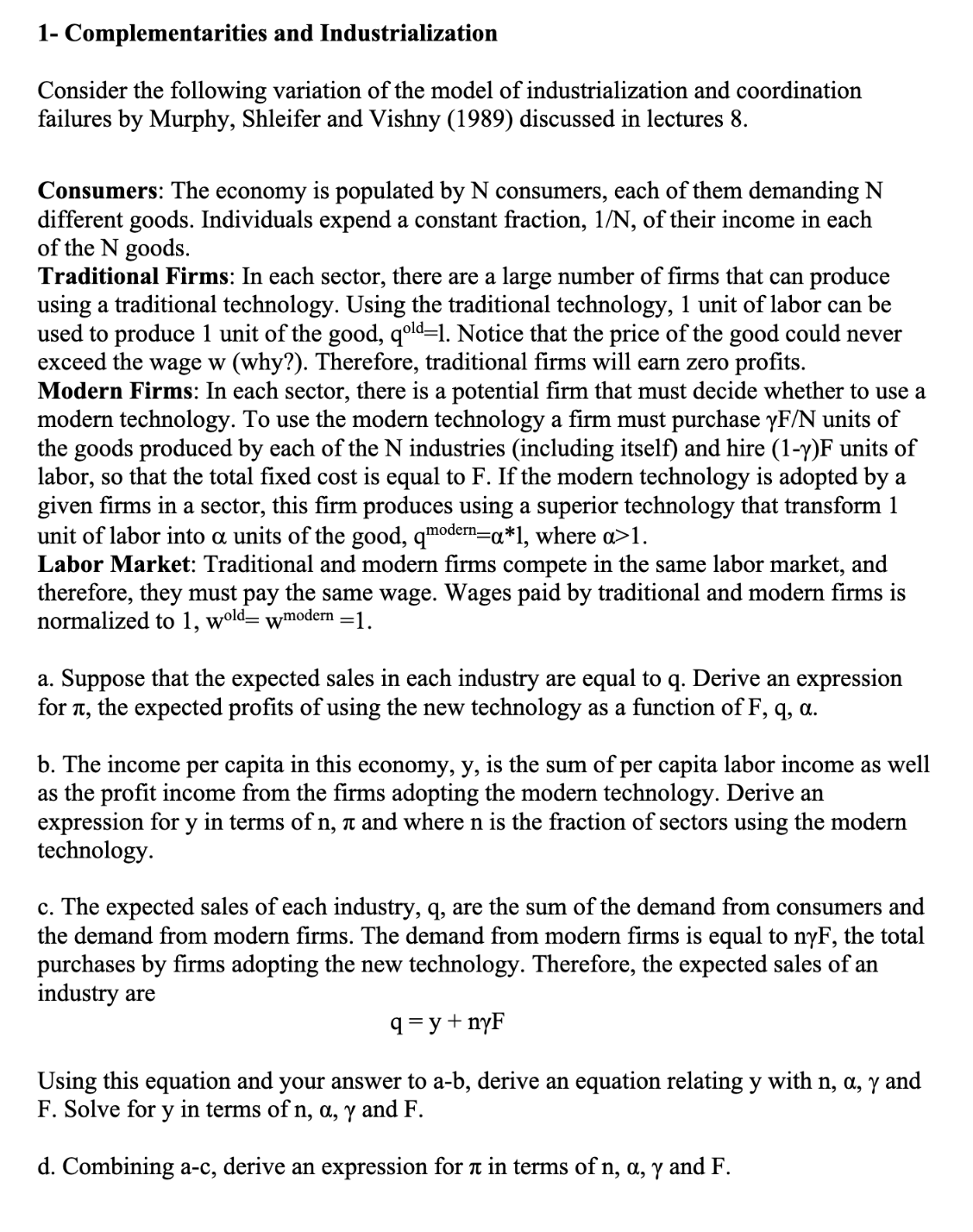c. The expected sales of each industry, q, are the sum of the demand from consumers and the demand from modern firms. The demand from modern firms is equal to nyF, the total purchases by firms adopting the new technology. Therefore, the expected sales of an industry are q=y+nyF Using this equation and your answer to a-b, derive an equation relating y with n, a, y and F. Solve for y in terms of n, a, y and F. d. Combining a-c, derive an expression for in terms of n, a, y and F.
c. The expected sales of each industry, q, are the sum of the demand from consumers and the demand from modern firms. The demand from modern firms is equal to nyF, the total purchases by firms adopting the new technology. Therefore, the expected sales of an industry are q=y+nyF Using this equation and your answer to a-b, derive an equation relating y with n, a, y and F. Solve for y in terms of n, a, y and F. d. Combining a-c, derive an expression for in terms of n, a, y and F.
Chapter2: Productions Possibilities, Opportunity Costs, And Economic Growth
Section2.7: Present Investment And The Future Production Possibilities Curve
Problem 1GE
Related questions
Question
C,D

Transcribed Image Text:1- Complementarities
and Industrialization
Consider the following variation of the model of industrialization and coordination
failures by Murphy, Shleifer and Vishny (1989) discussed in lectures 8.
Consumers: The economy is populated by N consumers, each of them demanding N
different goods. Individuals expend a constant fraction, 1/N, of their income in each
of the N goods.
Traditional Firms: In each sector, there are a large number of firms that can produce
using a traditional technology. Using the traditional technology, 1 unit of labor can be
used to produce 1 unit of the good, qold-1. Notice that the price of the good could never
exceed the wage w (why?). Therefore, traditional firms will earn zero profits.
Modern Firms: In each sector, there is a potential firm that must decide whether to use a
modern technology. To use the modern technology a firm must purchase yF/N units of
the goods produced by each of the N industries (including itself) and hire (1-y)F units of
labor, so that the total fixed cost is equal to F. If the modern technology is adopted by a
given firms in a sector, this firm produces using a superior technology that transform 1
unit of labor into a units of the good, qmodern=a*1, where a>1.
Labor Market: Traditional and modern firms compete in the same labor market, and
therefore, they must pay the same wage. Wages paid by traditional and modern firms is
normalized to 1, wold- wmodern =1.
a. Suppose that the expected sales in each industry are equal to q. Derive an expression
for
TT, the expected profits of using the new technology as a function of F, q, a.
b. The income per capita in this economy, y, is the sum of per capita labor income as well
as the profit income from the firms adopting the modern technology. Derive an
expression for y in terms of n, à and where n is the fraction of sectors using the modern
technology.
c. The expected sales of each industry, q, are the sum of the demand from consumers and
the demand from modern firms. The demand from modern firms is equal to nyF, the total
purchases by firms adopting the new technology. Therefore, the expected sales of an
industry are
q=y+nyF
Using this equation and your answer to a-b, derive an equation relating y with n, a, y and
F. Solve for y in terms of n, a, y and F.
d. Combining a-c, derive an expression for a in terms of n, a, y and F.
Expert Solution
This question has been solved!
Explore an expertly crafted, step-by-step solution for a thorough understanding of key concepts.
Step by step
Solved in 2 steps

Knowledge Booster
Learn more about
Need a deep-dive on the concept behind this application? Look no further. Learn more about this topic, economics and related others by exploring similar questions and additional content below.Recommended textbooks for you



